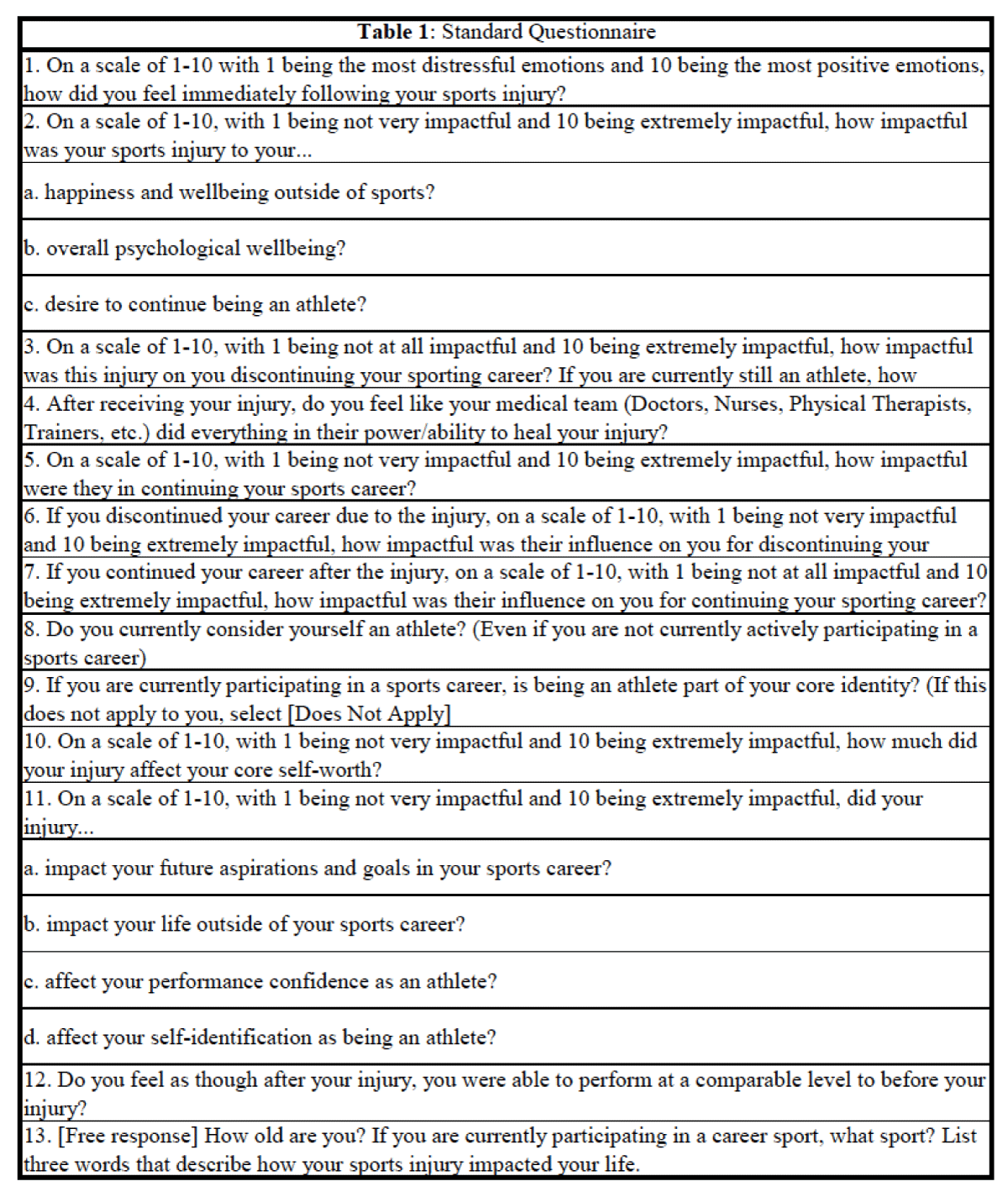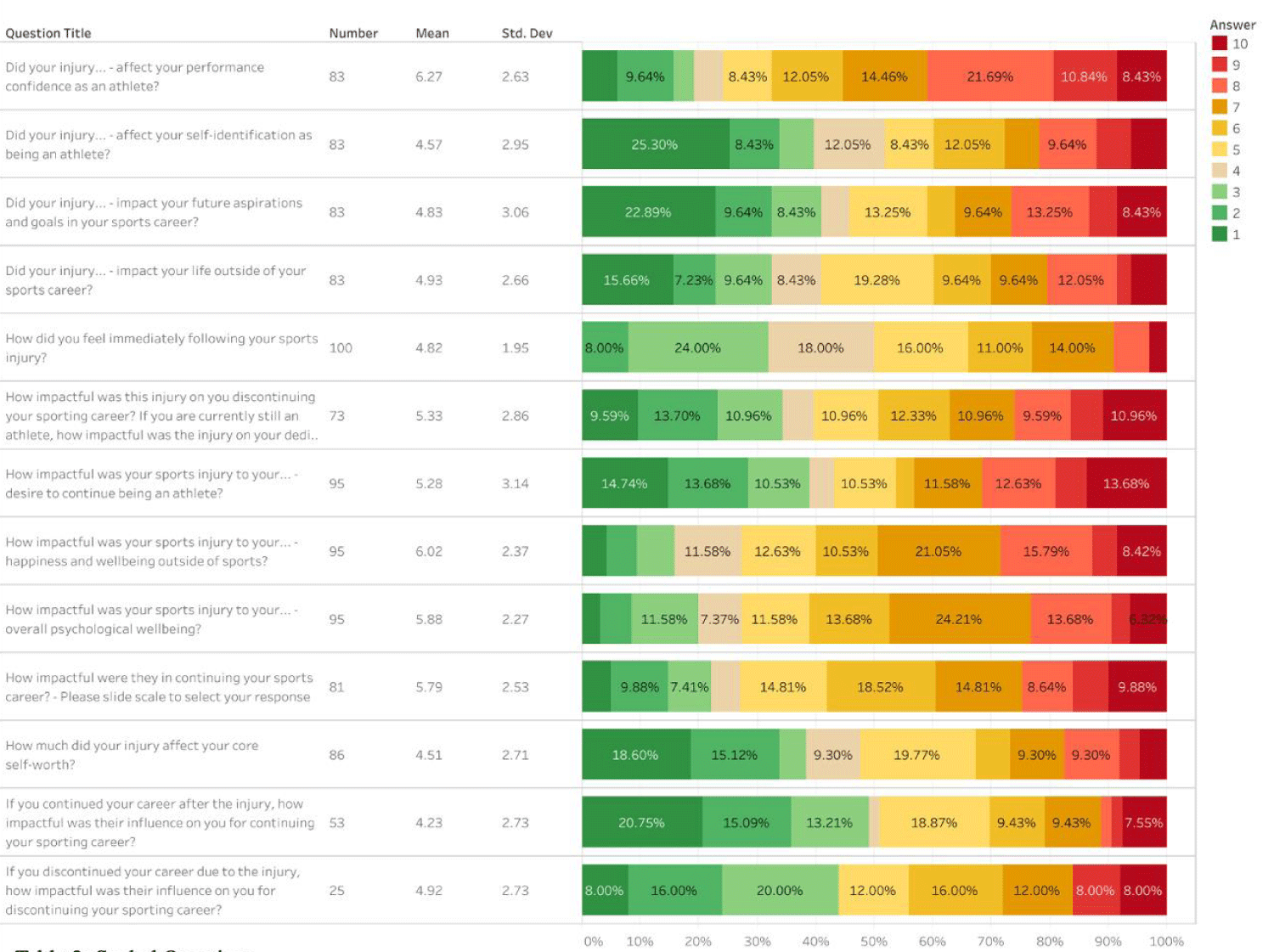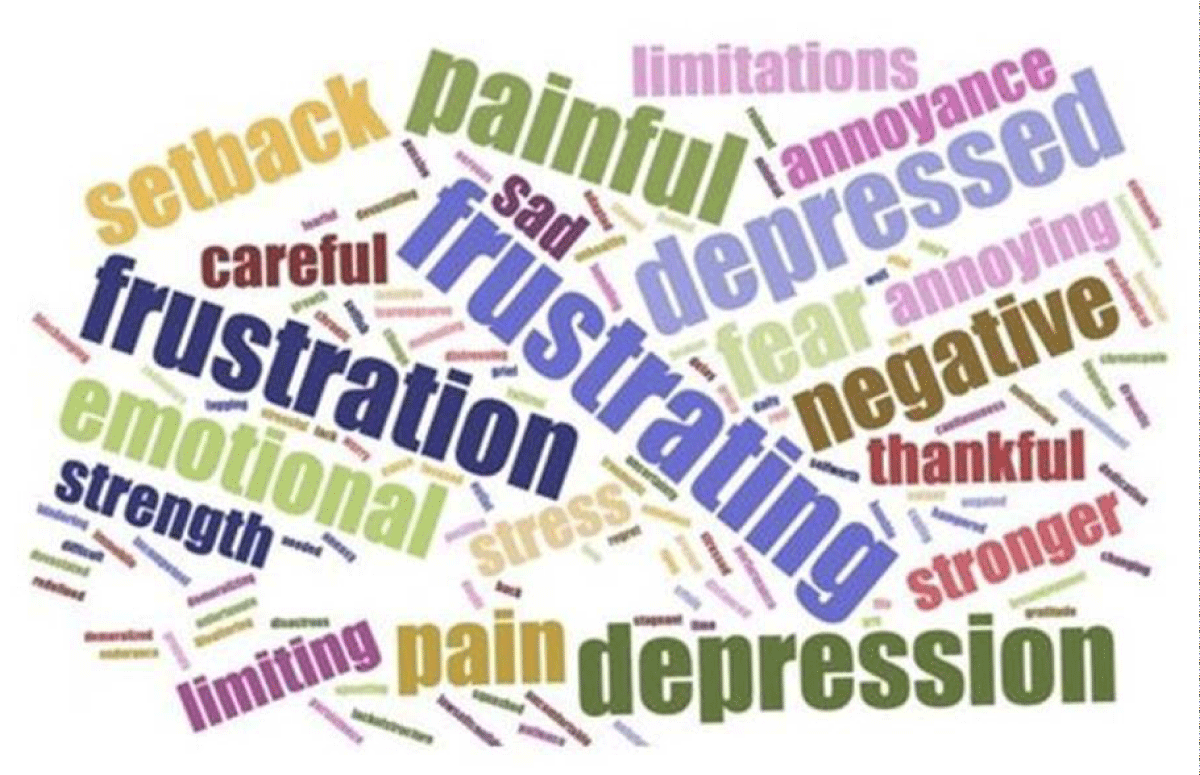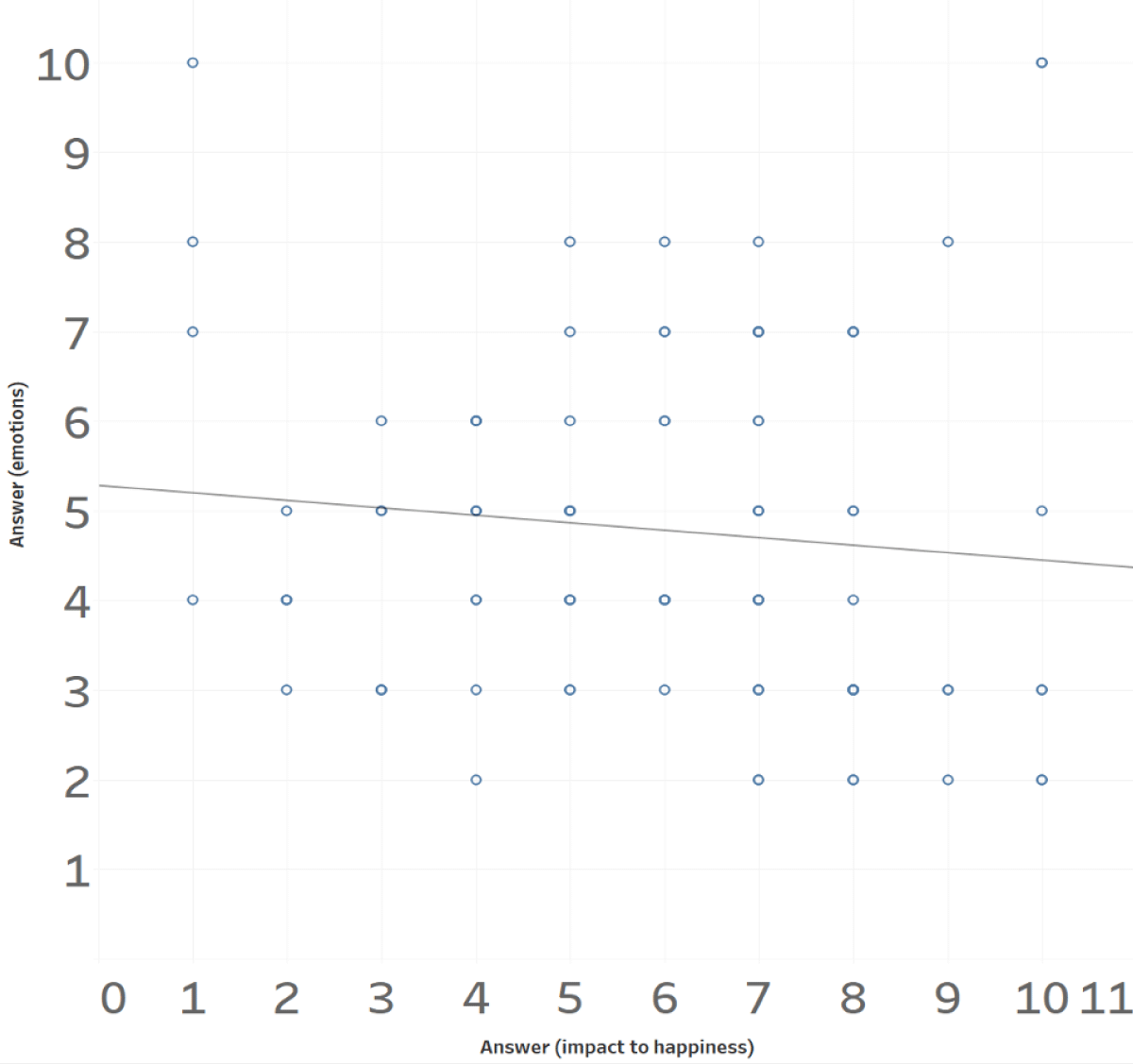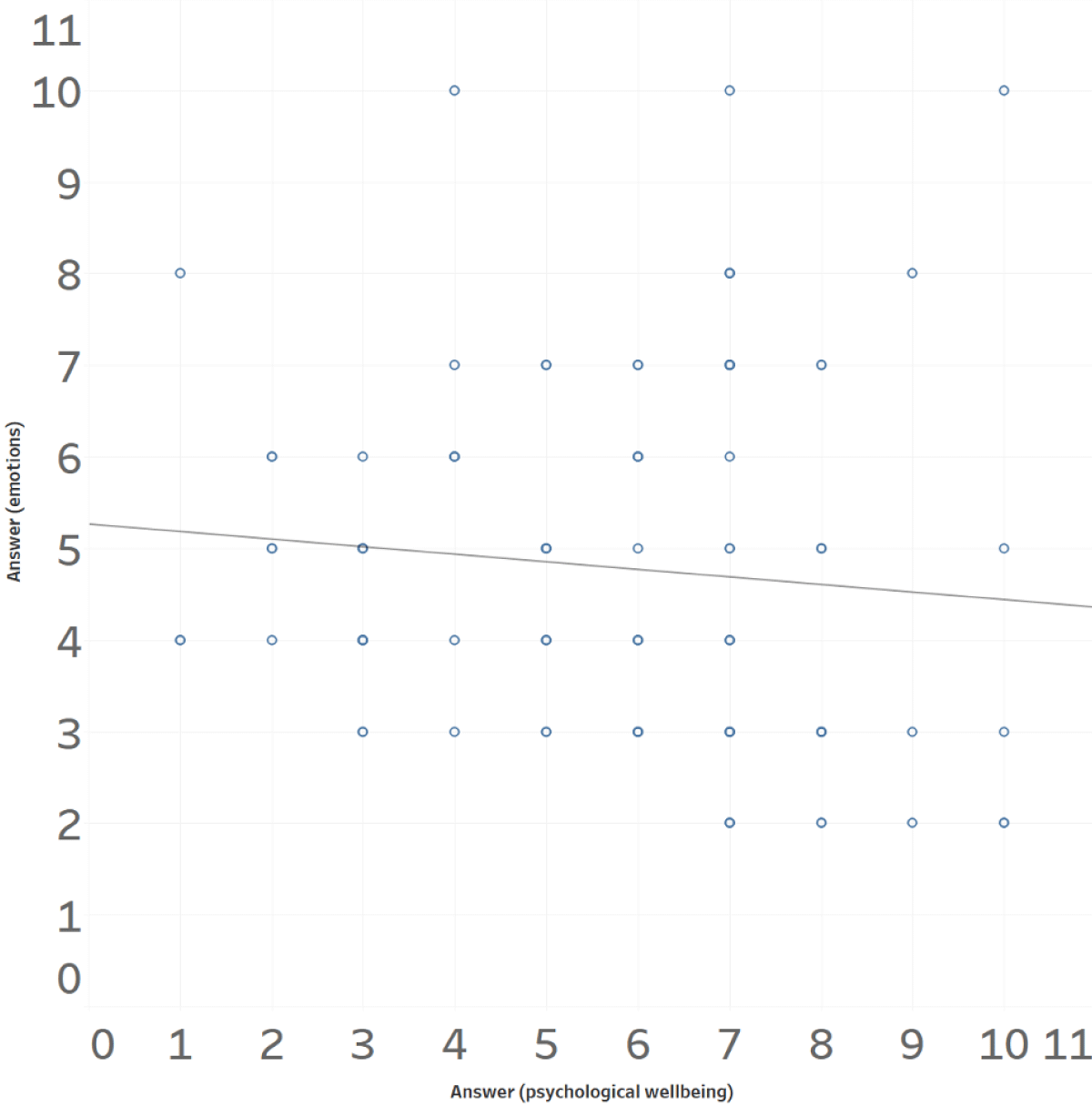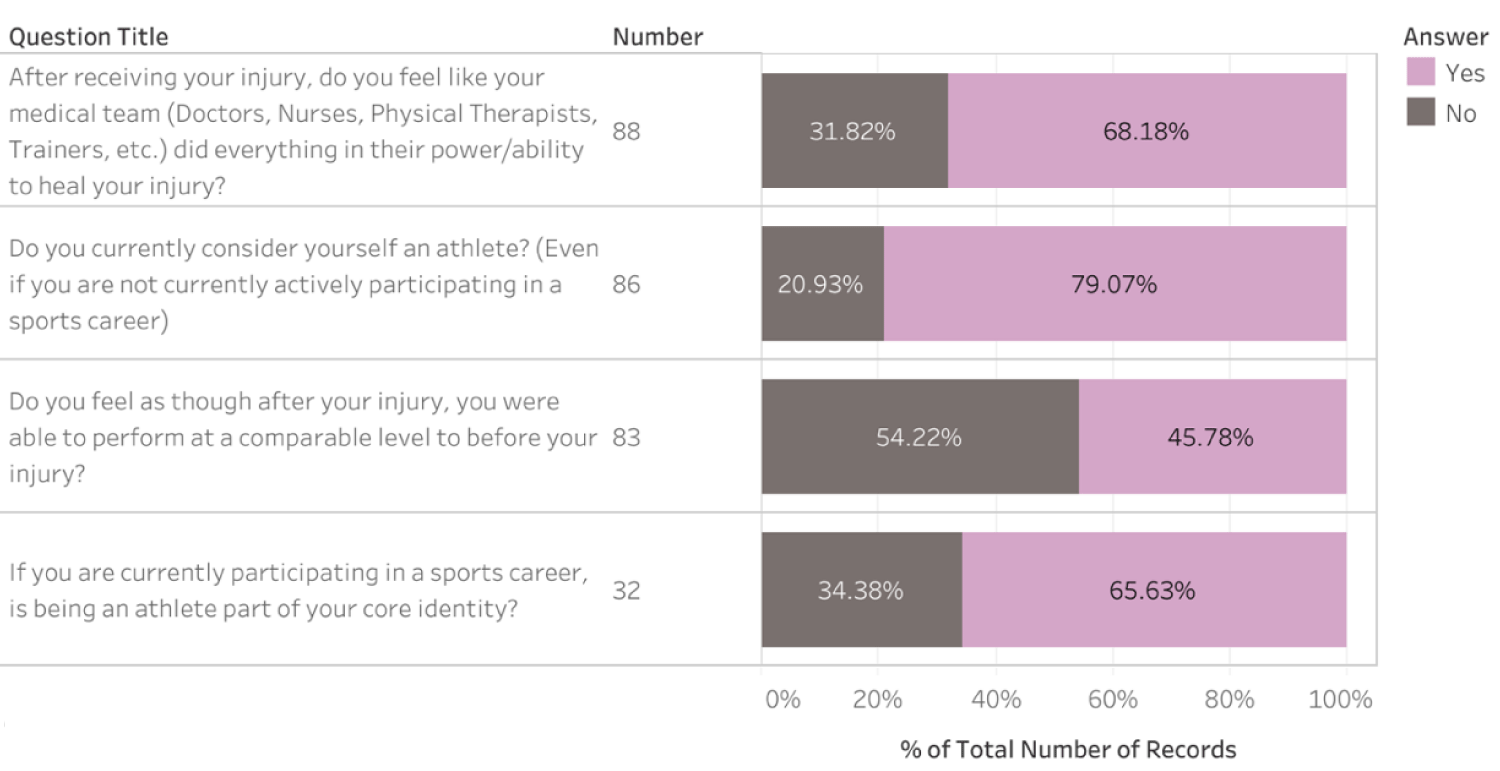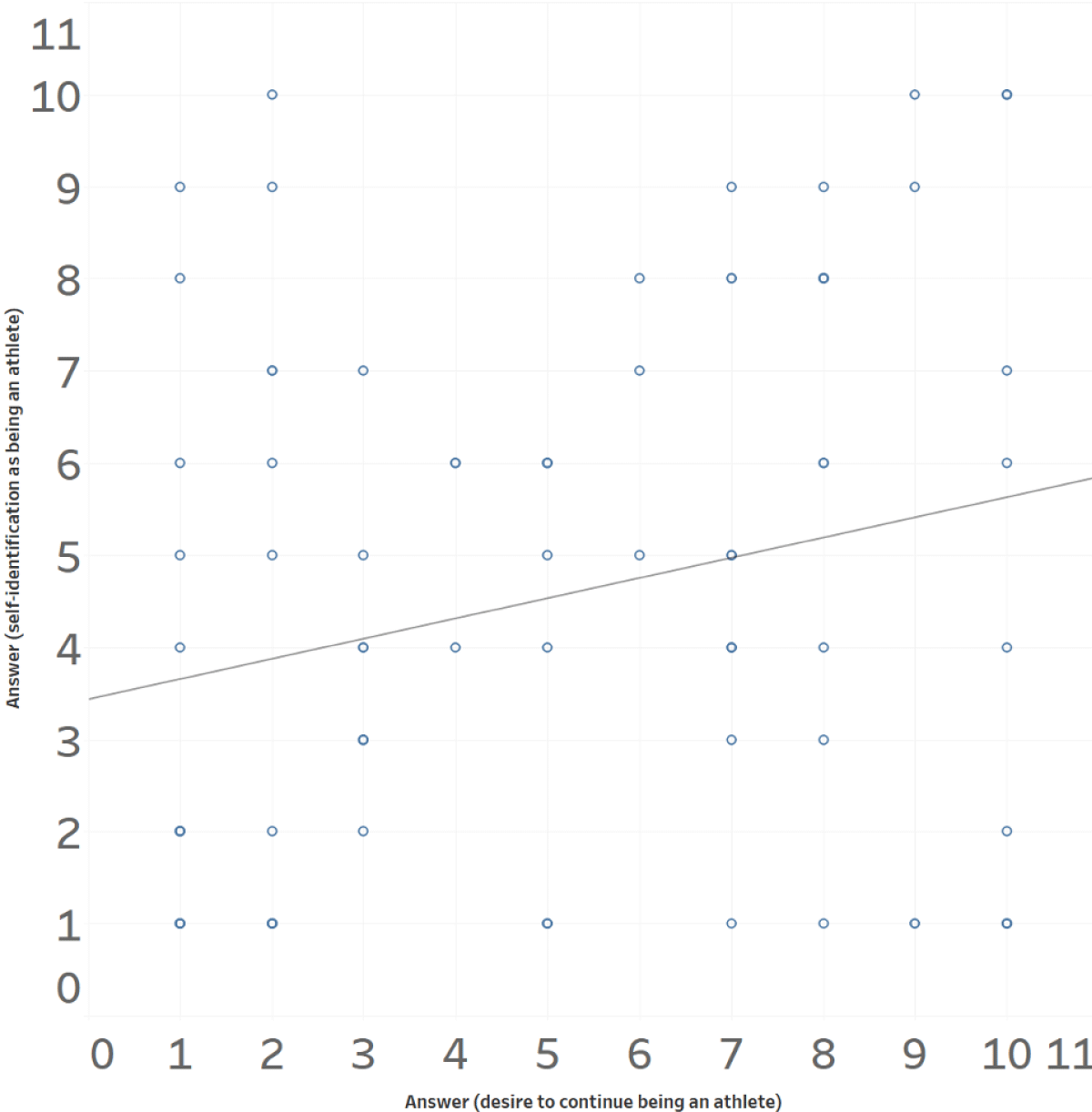More Information
Submitted: August 31, 2023 | Approved: September 19, 2023 | Published: September 20, 2023
How to cite this article: Dacus L, Castagno C, Castagno C, Gontre G, Weiss WM. Impact of Traumatic Sports Injury on an Athlete’s Psychological Wellbeing, Adherence to Sport and Athletic Identity. J Sports Med Ther. 2023; 8: 036-046.
DOI: 10.29328/journal.jsmt.1001070
Copyright License: © 2023 Dacus L, et al. This is an open access article distributed under the Creative Commons Attribution License, which permits unrestricted use, distribution, and reproduction in any medium, provided the original work is properly cited.
Keywords: Sports psychology; Athletic identity; Adherence to sport; Athletic injury; Sports performance; Sports medicine; Coaching; Athletic training
Impact of Traumatic Sports Injury on an Athlete’s Psychological Wellbeing, Adherence to Sport and Athletic Identity
Laurel Dacus1#, Christopher Castagno1*# , Ciara Castagno2, Gil Gontre1 and William M Weiss3
, Ciara Castagno2, Gil Gontre1 and William M Weiss3
1Texas Tech University Health Science Center, Paul Foster School of Medicine, El Paso, TX, USA
2STAG Human Performance, El Paso, TX, USA
3University of Texas Medical Branch at Galveston, Galveston, TX, USA
#Authors had equal contributions to the paper
*Address for Correspondence: Christopher Castagno, Department of Orthopedics and Rehabilitation, Texas Tech University Health Science Center at El Paso, Paul Foster School of Medicine, 4801 Alberta Ave, El Paso, Texas, 79905, USA, Email: [email protected]
Introduction: Sports injuries can affect athletes across all ages, sexes, and levels of competition. The mental aspect of acute sports injury is often overlooked by coaches, trainers, and medical professionals. This study investigated if and how an acute traumatic sports injury affects an athlete’s psychological well-being, adherence to sport, and athletic identity.
Methods: The study consisted of surveys sent to former or current athletes over 18 with one or more athletic injuries. The Qualtrics surveys were anonymous, and participants consented to the study within the survey.
Results: There were 101 total participants (20.2% response rate) with an average age of 36. All reported one or more acute athletic injuries throughout their athletic careers. Specific survey sets were compared against each other using a variable correlation analysis (p - value < 0.05) and via Pearson’s Correlation.
Conclusion: The results indicated that injury impacts the lives of athletes most significantly on the field and can harm their performance based on their perception of the severity of the injury. However, this decline in performance and decrease in confidence does not correlate to an athlete’s desire to leave their sport or how they identify as being an athlete.
Takeaways: 1) The stronger an individual identifies as being an athlete, the more likely they are to continue their sports career after an injury. 2) An athlete’s self-worth after an injury significantly impacts their feelings outside athletics. 3) For athletes emotionally impacted by their acute traumatic injury, the injury was a significant factor regarding their athletic performance.
One of the often overlooked areas of sports training and medicine is the impact of injury on an athlete outside of the physical damage done by the traumatic event. Understanding how injury influences an athlete across multiple dimensions is vital to improving athletes’ mental wellness and overall well-being before, during, and after their athletic careers. Previous research has shown that the identity of athletes and their association with being an athlete throughout their lives is highly significant and an influential contributor to how athletes see themselves in the community and their adherence to the sport. The stronger an athlete’s self-identification as an athlete and their embodiment of the role of an athlete within their community showed statistically significant improvement in their athletic performance.
Additionally, more data must be collected on how these injuries’ physical and psychological impact translates into their athletic identity and performance. The athlete’s ability to balance their physical and mental performance post-injury varies greatly, and the need for physicians, coaches, and trainers to treat the mental aspect of their athletes/patients is becoming increasingly apparent. This study explores how an acute traumatic sports injury affects an athlete’s psychological well-being, adherence to sport, and athletic identity.
Sports injuries are prevalent and can affect athletes across all ages, sexes, and levels of competition. The mental aspect of sports psychology has been overlooked for many years by most medical and sports professionals. This study aimed to evaluate how a traumatic sports injury impacts an athlete outside of the physical aspects of the damage by critically examining an athlete’s psychological resilience… in the face of adversity that could be caused by bodily injury [1,2].
While research on the short-term psychological effects of a traumatic sports injury in athletes has recently gained momentum, the long-term effects of such have historically been sparse. The self-determination theory, a classic psychological approach to human motivation and personality that uses “traditional empirical methods…highlighting the importance of humans’ [need] for personality development and behavioral self-regulation,” was the hallmark of the meta-analysis performed in 2000 by Edward L. Deci and Richard M. Ryan that delved into the study of human behavior concerning a person’s optimal development, performance, and well-being [3]. Dr. Deci and Dr. Ryan concluded that intrinsic motivation, a pertinent sub-category within the self-determination theory, plays a critical role in the long-term development of cognitive and behavioral well-being. Dr. Deci and Dr. Ryan noted that positive extrinsic motivation enhances performance and improves overall well-being [3,4].
The scientific basis for this paper is founded on the concept of the “grounded theory.” Dr. Fletcher discusses this theory in a 2012 paper in which grounded theory procedures facilitated the development of a conceptual framework of organizational stressors consisting of five general dimensions: factors intrinsic to the sport, roles in the sports organization, sports relationships and interpersonal demands, athletic career and performance development issues, and organizational structure and climate of the sport [5]. All these factors converge to create an athlete’s identity, which is tightly aligned with their athletic identity. These factors influence an individual’s performance and can have negative and positive compounding effects [6,7]. The further an athlete progresses in their athletic career, the more closely tied their identity becomes with their identity as an athlete. These identities can even merge and subsequently be detrimental to individuals when the eventuality of their athletic career ends or is interrupted by an acute injury.
Primary reexamination research by Dr. Arent and Dr. Landers examined how well-being and sports performance correspond to anxiety and arousal. This analysis involved using the Yerkes-Dodson Law (Inverted-U Theory), which states that there is a “set point” at which a person will have an optimal level of performance in the presence of arousal [8]. In certain biopsychological realms, arousal is an energizing function that harnesses the body’s resources for intense and vigorous activity [8]. Many scholars tend to use anxiety and arousal synonymously. However, anxiety in this context is defined more as a mental status descriptor in a particular situation. In Dr. Arent and Dr. Lander’s research, anxiety is an emotional state or reaction…characterized by unpleasant feelings of intensity, preoccupation, disturbance, and apprehension [8]. If a person is under-stimulated, they will likely perform poorly simply because they do not have an optimal level of anxiety or arousal to perform to the best of their ability. On the opposite end of the spectrum, over-stimulation can also lead to poor performance due to excess anxiety and arousal. The doctors concluded that Yerkes-Dodson Law supports predicting an athlete’s optimal level of performance and arousal [9]. The Yerkes-Dodson Law is the basis of the Inverted U theory, which attempts to explain the performance and arousal relationship. Additionally, Dr. Arent and Dr. Landers discussed that anxiety related to athletic performance is both cognitive and somatic, meaning that physical and psychological anxiety have similar effects on performance [9]. The Yerkes-Dodson Law, combined with an evaluation of cognitive and somatic anxiety, is useful in determining an athlete’s performance following a traumatic injury [8,9].
Traumatic injury amongst athletes is not an uncommon phenomenon. Healing and recovering from injury have historically been accomplished with the assistance of a rehabilitation team including, but not limited to, a team physician, athletic trainer, physical therapist, and coaches [10-12]. Approaches to rehabilitation typically include treating the athlete’s physical injury combined with a continued evaluation of their ability and readiness to return to the sport. An athlete’s emotional response to their traumatic injury has been slightly acknowledged in the past but only recently has the added benefit of psychological wellness through recovery been introduced [11,12]. Modern research in sports medicine stresses the importance of incorporating a rehabilitation program by the treating physician [13]; specifically, one that addresses the psychological and physical consequences that accompany injury as well as recognizing problematic emotional reactions… which are loss of identity, fear, and anxiety, and a loss of confidence [10,12,14-16]. These problematic reactions may lead to long-term psychological injury despite full physical recovery, which, in turn, could affect an athlete’s desire to stay in their sport and ultimately hurt their overall long-term well-being in and out of their athletic careers [13,17,18].
Feinberg, in 2006, used social facilitation to examine how evaluation and distraction manipulations may affect one’s performance differentially. Individuals working on tasks that fall under social facilitation may need to be particularly mindful of their working environment [19]. There are many significant effects on how athletes are judged and compared to one another. When an athlete is injured, their process of self-evaluation changes, and the environments in which they are now compelled to be (rehab, clinics, hospitals, etc.) all contribute to their self-identity. These environments can alter their perceived self and subsequently influence their performance [20-22]. Humans perpetually compare themselves against one another, and individuals who compete at high levels are some of the most critical of themselves and others—the constant pursuit of perfection and a need to “be the best” perpetually exists.
In 1982, Harris was one of the first to examine how athletes deny themselves the full benefit of their talent by allowing psychological states to interfere with their performance [23]. The mental state can significantly affect the athlete’s performance on the field. Furthermore, an athlete’s “perceived psychological factors (drive, ambition, confidence, etc.), natural ability, and physical appearance are critical to the athlete’s future success [24-26].” This success impacts an athlete’s mental state and is a self-perpetuating cycle of positive emotions and performance. A sudden and dramatic decline in performance, such as an acute traumatic injury, can disrupt this positive cycle and negatively impact an athlete’s mental state [27,28]. An athlete can descend into a spiral of existential stress and identity crises [29,30]. This cycle can also be self-perpetuating and can cause stress across all levels of an individual’s life. The impact can be far-reaching into the latter aspects of their life.
There is an evolving amount of research on how physical injury impacts the various factors of athletic identity and adherence to sport. There is a notable need for additional empirical research to measure the magnitude and direction of stress effects on performance in a controlled environment. One reason for this is the inherent difficulties in identifying and isolating direct performance measures for individuals [31]. As medicine evolves into a more comprehensive, evidence-based, and holistic model of care, physicians that take care of both current and former athletes need to critically look at how the mental aspect of physical injury can contribute to their patient’s current and future sports performance, social integration, and healthcare needs.
This paper further examines the relationship between an athlete’s traumatic injury and their psychological well-being, adherence to sport, and athletic identity regarding how one or more acute traumatic injuries impacted their lives in and outside their sport. Such factors were viewed retroactively to assess how the individual athlete believes their injury either negatively or positively influenced their life at the time of the injury, as well as future goals and aspirations. This research also examines an athlete’s well-being while returning to their sport post-injury and its impact on their identity as an athlete. This study aimed to explore how a sports injury can affect an athlete outside of the physical aspects, which was broken into three categories for analysis: athletic identity, adherence to sport, and psychological well-being.
The study methods overview consisted of surveys sent out to former or current athletes over 18 with one or more acute traumatic athletic injuries in their careers. The email/letter contained a link to the survey program (Qualtrics). The surveys were anonymous, and participants consented to proceed with the survey.
This paper focused on former and current athletes in the later stages of their careers/lives (adult population). The athletes surveyed needed to have experienced at least one or more acute sports injuries in their careers. The injury must have been significant enough to have required a medical intervention (surgery, orthotics, injections, etc.) beyond traditional rehab, rest, and nonsteroidal anti-inflammatory drugs. Exclusion criteria were set for non-athletes, athletes under 18, and athletes who had never experienced acute traumatic injuries. Target athletes came from populations that had competed at the collegiate level or above.
Surveys were created and distributed online within 60 days of IRB approval. Questions were generated and agreed upon by all investigators. Identification of subjects/contacts was requested via public email addresses. Group/team request emails were initially directed toward coaches and athletic directors, who were then asked to distribute the requested email and survey links to their current and former student-athlete populations (Figure 1). The survey was organized and conducted using a modified Likert Scale for data capture that was expanded for increased specificity [32]. A copy of the survey questions can be seen in Table 1. No social media platforms were used at any time, all surveys were identical, and no risks were identified in this study. No physical or monetary benefit was achieved by taking this survey, and all test subjects remained anonymous throughout the project. No names or identifiable information was required to complete the survey.
Figure 1: A: Sample Email Request Letter for Coaches and Athletic Directors. B: Sample Email Survey Request Letter for Coaches and Athletics.
Table 1: Standard questionnaire.
The number of subjects needed was determined by the minimum amount of test subjects required to hold a statistically significant value. We aimed for 75 total respondents, and it was estimated that approximately 15% of people would participate in a non-monetized research survey. Therefore, we needed to send out a minimum of 500 surveys to achieve our desired study population.
Roughly 500 survey request letters were distributed, and there was a total of 104 participants (~21% response rate). We surpassed our participation goal by 29 respondents. However, some individuals under 18 completed the survey, and we had to exclude these from our overall analysis. This brought the total number of surveys analyzed to 101 (~20.2% response rate). When analyzing the data, we obtained a mean, standard deviation, and number of participants for each survey. We then compared specific survey sets against each other using a variable correlation analysis with help from the Texas Tech Office of Medical Education Statistics Department.
The average age of respondents was 36 (age stratification was 18-75), and all had had one or more traumatic athletic injuries throughout their sporting career. Traumatic injuries were defined as single events that caused the need for medical intervention, and the exact age/time frame of the injury was not evaluated in the survey. Further, chronic and repetitive use injuries or the varying impacts of the physical aspects of the injuries were not part of the survey. The survey focused more on the injury’s subsequent mental implications of the injury and not the physical consequences. Participants were not asked to disclose their location at the time of injury or current location, so population demographics regarding geographical location were not accounted for, and data on whether the athletes advanced to higher levels in their athletic careers was not collected. These various areas as mentioned earlier were outside the scope of this study.
Some questions needed full participation from respondents, so each question set had a range of responses. Depending on the question, the field was roughly 74 to 101 persons. A wide variety of sports were reported in the survey, both individual and team-based. Some of the most common sports noted were Track and Field, Baseball, and Football. Lastly, when looking for correlations between question sets, we used a variable correlation analysis by setting a p-value of significance at <0.05 and generating a Pearson’s Correlation Value by taking the square root of the r-squared value.
Regarding an athlete’s psychological well-being, athletes felt that their sports injury had a significant impact on their happiness and well-being outside of sports (Table 2) (n = 96; mean scaled score = 6.05) as well as their overall psychological well-being (Table 2) (n = 96; mean risen score = 5.90). Participants reported negative feelings of distress immediately following their injury (Table 2) (n = 101; mean scaled score = 4.80). The short answer question prompted respondents to provide three words to describe how their sports injury impacted their lives at the time of the injury and the subacute aftermath. Most participants used language such as “frustrating,” “depression,” “painful,” “emotional,” “setback,” “negative,” etc. Within the figure, the most repeated words in the survey are represented in progressively larger font sizes than less reported emotional language, which is inversely represented in progressively smaller font sizes (Figure 2).
Table 2: Scaled Questions.
Figure 2: Free Response Words Associated with Injury.
When variables were correlated, the variable correlation analysis showed a statistically weak relationship between an athlete’s emotions following their injury and their happiness and well-being outside of sports (Table 2 and Figure 3) (p = 0.333; Pearson’s Correlation = 0.101). There was also a statistically weak relationship between an athlete’s emotions following their injury and their overall psychological well-being (Table 3 and Figure 4) (p = 0.361; Pearson’s Correlation = 0.096).
Figure 3: How did you feel immediately following your sports injury? vs. How impactful was your psorts injury to your… -happiness and wellbeing outside of sport? P = 0.333; Pearson’s Corelation = 0.101.
Figure 4: How did you feel immediately following your sports injury? vs. How impactful was your sports injury to your… -overall psychological wellbeing? P = 0.361; Pearson’s Correlation = 0.096.
Table 3: Yes/No Questions.
The desire to continue being an athlete appeared minimally impacted by the athlete’s traumatic sports injury (n = 96; S.D. = 3.13; mean scaled score = 5.30) (Table 2). There was an overall sense of perceived support from the athlete’s medical team following their injury, with 67% (n = 60) of participants feeling supported and 33% (n = 29) feeling unsupported (total n = 89) (Figure 5). However, there was only minimal influence that the medical team had on the athlete’s desire to continue (n = 82; S.D. = 2.54; mean scaled score = 5.83) or discontinue (n = 26; S.D. = 2.79; mean scaled score = 5.08) their sporting career (Table 2).
Figure 5: Did your injury…- affect your self-identification as being an athlete? vs. How impactful was your sports injury to your…-desire to continue being an athlete? P = 0.314; Pearson’s correlation = 0.236.
Of 87 responses, sports injury had no significant impact on an athlete’s core self-worth (mean scaled score = 4.56; S.D. 2.74) (Table 2 and Figure 6). Data regarding the effects of sports injury on athletic identity showed that 69% (n = 60) of respondents had a post-injury impact score of < 5 on their athletic identity (Table 2). Inversely, the athlete’s performance confidence had 76% (n = 64) of respondents having a > 5 impact rating overall (Table 2). Injury had only a moderate impact on an athlete’s life outside of their sporting careers (mean scaled score = 4.93; S.D. 2.66) (Table 2) and their future aspirations and goals in their sporting careers (mean scaled score = 4.83; S.D. 3.069) (Table 2).
Lastly, we did four different comparisons between the most impactful data sets. The first two data sets showed minimal to no significance. We compared an athlete’s emotions following their injury and their impact on their happiness and well-being outside of sports (p = 0.333; Pearson’s Correlation = 0.101) (Table 1 and Figure 3) as well as comparing the emotional response following an injury vs. how it related to the athlete’s overall psychological well-being (p = 0.361; Pearson’s Correlation = 0.096) (Table 2 and Figure 4). However, there was very high significance and a moderate correlation between post-injury impact on athlete’s core self-worth and their happiness and well-being outside of sports (p = < 0.0001; Pearson’s Correlation = 0.600) (Table 2 and Figure 6), and high significance and weak correlation when comparing self-identification as an athlete against the desire to continue being an athlete (p = 0.031; Pearson’s Correlation = 0.236) (Table 1, Table 2, and Figure 5).
Most people, at some point in their lives, will experience some sort of injury, and an injury due to acute trauma can be further complicated by mental and emotional factors outside of the physical components of the injury. These hurdles are compounded even more when the individual’s identity rests upon their ability to perform physically [14,33,34]. An athlete’s psychological well-being, athletic identity, and adherence to their chosen sport can be completely turned upside down upon receiving an acute traumatic injury [30,35,36].
The overall negative feelings of distress following the athlete’s injury can persist long-term, affecting their happiness and psychological well-being in their future athletic endeavors and their lives outside of athletics. A strong relationship exists between an athlete’s emotional and psychological state, joy, and well-being outside the sport directly following injury. This indicates that not only did their injury affect them at that moment in their sports performance, but it also significantly impacted their happiness and overall psyche outside of that sport.
When participants were prompted to provide a list of three words that they associated with their traumatic sports injury, the vast majority of free response words supplied by the athletes were predominantly negative (“frustrating,” “depression,” “painful,” “emotional,” “setback,” and “negative”). Additionally, the athletes felt a sense of negative distress immediately following their injury. Considering this, these self-descriptors of how the athletes felt at the time post-injury are quite telling in how athletes emotionally perceive their injury months or years after it happened. The athlete’s perception of the injury seemed to impact their ability or willingness to overcome their injury and return to their sport. Helping the athletes overcome this overall negative self-perception and high level of post-injury distress is essential for clinicians, trainers, and coaches to keep in mind when supporting and treating these athletes following injury. This critical aspect of treatment could make or break the athlete’s self-confidence to return to their sport and eventually perform at a level similar to that of their pre-injured self. The mental aspect of injury is often overlooked, and our data has demonstrated that this is a vital aspect when holistically treating patients and makes for a more productive and speedy recovery.
However, there was a surprising lack of correlation in the relationship between athletes’ emotions immediately following injury and a change in their happiness and well-being outside of their sport. The feelings were both negative individually, but the data showed that one did not directly impact the negative outcome of the other. This effect may be related to our evidence that an athlete’s overall sentiment was that they were supported by their social ecosystem and their medical/athletic training team. Furthermore, the general impact trend on an athlete’s core self-worth was minimal. The combination of these factors demonstrates that the athlete with a strong core-self-worth and a sound support system will be better able to emotionally handle athletic injury in their daily lives and, subsequently, not allow their feelings about the damage to seep into other aspects of their lives. However, if an athlete’s injury did impact their core-self-worth, it greatly influenced their happiness levels outside of their sport, with a P-value of <0.0001 being calculated. The more significant the impact of the injury on an individual’s concept of self, the more critical this impact is across the different aspects of their life.
We also critically looked at how injury influences how athletes see themselves after an injury and if this injury impacted their decision to continue participating in sports. Our research has shown that injury negatively impacts athletes’ lives outside of sports but is not a major contributing factor when deciding to leave an athletic career. When deciding to leave their sports career, the data suggests that individuals look at many aspects/factors when making this decision and not necessarily just the impact of an injury. The injury may not impact their decision to leave or discontinue being an athlete. Still, the injury impact on an athlete’s life outside of sport may have lifetime psychological and social consequences that were not accounted for during this study.
Lastly, our research showed a high correlation between an athlete’s injury and how this injury impacts performance confidence. This robust correlation indicates that survey participants who strongly identified as athletes significantly declined their performance confidence, even after their injury. (76% of athletes strongly felt that the injury impacted their confidence). Logically, an injury decreases an athlete’s confidence, but an athlete’s support team needs to consider the extreme impact of an injury on confidence. Even though an athlete’s confidence while performing their sport decreases, the injury only minimally influences how individuals perceive themselves as athletes [37,38]. This would suggest that once someone has devoted their life to a particular sport and has competed at a relatively high level of competition, their identity as an athlete stays with them in perpetuity, even after traumatic events and a decline in their confidence when participating in their sport.
Clinicians, coaches, and athletic staff need to treat not only their athletes’ physical injury but also the psychological and emotional aspects that emerge following their traumatic event. This can involve counseling, specialized psychological evaluations, psychotherapy, and even teaching athletes from a young age the power of psychological resilience [2,37,39,40].
Future research
Future research directions in this field of study should further explore the following areas: 1) The self-determination theory and the Yerkes-Dodson Law, which are historically reliable psychological concepts, should be further studied in terms of direct relation to injured athletes and long-term psychological well-being. 2) Investigational research addressing the relationship between athletes who decided to continue their sporting career versus those who decided to resign following their traumatic sports injury and the impact it may have had on their preinjury and long-term psychological responses [9-11]. 3) The relationship between athletes who decided to leave sports and how closely that tied with how their medical / support teams treated them. 4) Investigate how athletic identity and adherence to sport are influenced after a traumatic injury when comparing team-based sports versus individual athletic endeavors. 5) Lastly, additional research is needed to help determine if this paper’s results are consistent even in the setting of different athletic environments such as lower socio-economic countries, non-American Western countries, and non-western countries.
Overall, this research indicated that injury impacts the lives of athletes most significantly on the field and can harm their performance based on their perception of the injury and how it impacts their lives. However, this decline in performance and decrease in confidence does not correlate to an athlete’s desire to leave their sport or in how they identify as being a high-performance athlete. This finding greatly surprised the authors, and the result may be due to external factors and support systems not looked at during this study. Furthermore, it may be due to the athlete’s specific sport that they participated in (team-based vs. individual). If an athlete participates in a team-based sport, they will naturally have a larger and more robust support system around them.
Our research also showed that a designated medical team’s influence is surprisingly minimal on the overall impact of an athlete’s adherence to sport. As clinicians and trainers manage and help athletes overcome the mental aspect of their injury, they need to ensure that the athlete has external resources and support systems ready and available to help post-injury. The medical team may not significantly impact an athlete’s mental well-being, but they have the tools and foresight to bring key people into their lives to provide the mental care they need to perform on and off the field.
The three most powerful takeaways from this study are: 1) The stronger an individual identifies as being an athlete, the more likely they are to continue their sports career after an injury. 2) An athlete’s self-worth after an injury significantly impacts their feelings outside athletics. 3) For athletes emotionally impacted by their acute traumatic injury, the injury was a significant factor regarding their athletic performance.
- Horton RS, Mack DE. Athletic Identity in Marathon Runners: Functional Focus or Dysfunctional Commitment? Journal of Sport Behavior. 2000; 23(1): 101-119.
- Sarkar M, Fletcher D. How Should We Measure Psychological Resilience in Sport Performers? Measurement In Physical Education & Exercise Science. 2013; 17(4): 264-280.doi:10.1080/1091367X.2013.805141.
- Ryan RM, Deci EL. Self-determination theory and the facilitation of intrinsic motivation, social development, and well-being. Am Psychol. 2000 Jan;55(1):68-78. doi: 10.1037//0003-066x.55.1.68. PMID: 11392867.
- Cohen RA. Yerkes–Dodson Law. In: Kreutzer J.S., DeLuca J., Caplan B. (eds) Encyclopedia of Clinical Neuropsychology. 2011. Springer, New York, NY.
- Fletcher D, Hanton S, Mellalieu SD, Neil R. A conceptual framework of organizational stressors in sport performers. Scand J Med Sci Sports. 2012 Aug;22(4):545-57. doi: 10.1111/j.1600-0838.2010.01242.x. Epub 2010 Nov 18. PMID: 21083767.
- Weinberg R, Gould D. Foundations of Sport and Exercise Psychology. Human Kinetics, Eight Edition. 2023.
- Sudano LE, Collins G, Miles CM. Reducing barriers to mental health care for student-athletes: An integrated care model. Fam Syst Health. 2017 Mar;35(1):77-84. doi: 10.1037/fsh0000242. Epub 2016 Nov 28. PMID: 27893262.
- Arent SM, Landers DM. Arousal, anxiety, and performance: a reexamination of the Inverted-U hypothesis. Res Q Exerc Sport. 2003 Dec;74(4):436-44. doi: 10.1080/02701367.2003.10609113. PMID: 14768844.
- Önder SM. Study of the Concepts of Athletic Identity and Continuous Sport Self-Confidence in the Light of Various Variables. Journal of Education and Training Studies. 2017; 5(13). DOI:10.11114/jets. v5i13.2901.
- Putukian M. The psychological response to injury in student athletes: a narrative review with a focus on mental health. Br J Sports Med. 2016 Feb;50(3):145-8. doi: 10.1136/bjsports-2015-095586. Epub 2015 Dec 30. PMID: 26719498.
- Ardern CL, Taylor NF, Feller JA, Whitehead TS, Webster KE. Psychological responses matter in returning to preinjury level of sport after anterior cruciate ligament reconstruction surgery. Am J Sports Med. 2013 Jul;41(7):1549-58. doi: 10.1177/0363546513489284. Epub 2013 Jun 3. PMID: 23733635.
- Cremades J, Wated G, Wiggins MS. Measurement in Physical Education and Exercise Science. A Brief Report on 2017: Measurement in Physical Education and Exercise Science. 2018;15(3): 220-233. DOI: 10.1080/1091367X.2017.1391817.
- Robazza C, Bortoli L, Hanin Y. Perceived effects of emotion intensity on athletic performance: a contingency-based individualized approach. Res Q Exerc Sport. 2006 Sep;77(3):372-85. doi: 10.1080/02701367.2006.10599371. PMID: 17020081.
- Robazza C, Bortoli L, Hanin Y. Perceived effects of emotion intensity on athletic performance: a contingency-based individualized approach. Res Q Exerc Sport. 2006 Sep;77(3):372-85. doi: 10.1080/02701367.2006.10599371. PMID: 17020081.
- Cowee K, Simon JE. A History of Previous Severe Injury and Health-Related Quality of Life Among Former Collegiate Athletes. J Athl Train. 2019 Jan;54(1):64-69. doi: 10.4085/1062-6050-377-17. Epub 2019 Jan 18. PMID: 30657720; PMCID: PMC6410981.
- Chang CJ, Putukian M, Aerni G, Diamond AB, Hong ES, Ingram YM, Reardon CL, Wolanin AT. Mental Health Issues and Psychological Factors in Athletes: Detection, Management, Effect on Performance, and Prevention: American Medical Society for Sports Medicine Position Statement. Clin J Sport Med. 2020 Mar;30(2):e61-e87. doi: 10.1097/JSM.0000000000000817. PMID: 32000169.
- Allen-Collinson J, Hockey J. Working Out Identity: Distance Runners and the Management of Disrupted Identity. Leisure Studies. 2007; 26 (4): 381-398. 10.1080/02614360601053384.
- Sanchez X, Lambert P, Jones G, Llewellyn DJ. Efficacy of pre-ascent climbing route visual inspection in indoor sport climbing. Scand J Med Sci Sports. 2012 Feb;22(1):67-72. doi: 10.1111/j.1600-0838.2010.01151.x. Epub 2010 Jun 16. PMID: 20561271.
- Feinberg JM, Aiello JR. Social facilitation: A test of competing theories. Journal of Applied Social Psychology. 2006.
- Worringham CJ, Messick DM. Social facilitation of running: an unobtrusive study. J Soc Psychol. 1983 Oct;121(1st Half):23-9. doi: 10.1080/00224545.1983.9924462. PMID: 6645421.
- Mack AA, Baron D, Reinert J. The role of mental health care in reaching optimal performance in sports. Sports Psychiatry: Journal of Sports and Exercise Psychiatry. 2023. Advance online publication. https://doi.org/10.1024/2674-0052/a000050.
- Furie K, Park AL, Wong SE. Mental Health and Involuntary Retirement from Sports Post-Musculoskeletal Injury in Adult Athletes: a Systematic Review. Curr Rev Musculoskelet Med. 2023 May;16(5):211-219. doi: 10.1007/s12178-023-09830-6. Epub 2023 Apr 4. PMID: 37014610; PMCID: PMC10188780.
- Harris DV. Maximizing Athletic Potential: Integrating Mind and Body. Journal of Physical Education, Recreation & Dance. 1982.
- Wann DL. The Head and Shoulders Psychology of Success Project: An Examination of Perceptions of Olympic Athletes. North American Journal of Psychology. 2012; 14(1): 123-138.
- Uzzell KS, Knight CJ, Hill DM. Understanding and recognizing high-performance swimmers’ well-being. Sport, Exercise, and Performance Psychology. 2022; 11(1): 12–27. https://doi.org/10.1037/spy0000284.
- Daley MM, Griffith K, Milewski MD, Christino MA. The Mental Side of the Injured Athlete. J Am Acad Orthop Surg. 2021 Jun 15;29(12):499-506. doi: 10.5435/JAAOS-D-20-00974. PMID: 33826560.
- Wahl CA, Gnacinski SL, Nai MM, Meyer BB. Psychological predictors of perceived stress and recovery in sport. Sport, Exercise, and Performance Psychology. 2020; 9(3): 292–307. https://doi.org/10.1037/spy0000175.
- Xanthopoulos MS, Benton T, Lewis J, Case JA, Master CL. Mental Health in the Young Athlete. Curr Psychiatry Rep. 2020 Sep 21;22(11):63. doi: 10.1007/s11920-020-01185-w. Erratum in: Curr Psychiatry Rep. 2020 Oct 2;22(12):64. PMID: 32954448.
- Lundqvist C, Kenttä G, Raglin JS. Directional anxiety responses in elite and sub-elite young athletes: intensity of anxiety symptoms matters. Scand J Med Sci Sports. 2011 Dec;21(6):853-62. doi: 10.1111/j.1600-0838.2010.01102.x. Epub 2010 Mar 11. PMID: 22126716.
- Gouttebarge V, Frings-Dresen MH, Sluiter JK. Mental and psychosocial health among current and former professional footballers. Occup Med (Lond). 2015 Apr;65(3):190-6. doi: 10.1093/occmed/kqu202. Epub 2015 Jan 31. PMID: 25638208.
- Savage DA, Torgler B. Nerves of steel? Stress, work performance, and elite athletes. Applied Economics. 2012; 44(19): 2423-2435. doi:10.1080/00036846.2011.564150.
- Abrahamsen FE, Roberts GC, Pensgaard AM. An examination of the factorial structure of the Norwegian version of the sport anxiety scale. Scand J Med Sci Sports. 2006 Oct;16(5):358-63. doi: 10.1111/j.1600-0838.2005.00511.x. PMID: 16978256.
- Giannone ZA, Haney CJ, Kealy D, Ogrodniczuk JS. Athletic identity and psychiatric symptoms following retirement from varsity sports. Int J Soc Psychiatry. 2017 Nov;63(7):598-601. doi: 10.1177/0020764017724184. Epub 2017 Aug 10. PMID: 28795636.
- Edison BR, Christino MA, Rizzone KH. Athletic Identity in Youth Athletes: A Systematic Review of the Literature. Int J Environ Res Public Health. 2021 Jul 8;18(14):7331. doi: 10.3390/ijerph18147331. PMID: 34299786; PMCID: PMC8305814.
- Rogers DL, Tanaka MJ, Cosgarea AJ, Ginsburg RD, Dreher GM. How Mental Health Affects Injury Risk and Outcomes in Athletes. Sports Health. 2023 Jun 16:19417381231179678. doi: 10.1177/19417381231179678. Epub ahead of print. PMID: 37326145.
- Jasser J, Patel DR, Beenen KT. The Role of Psychologists in Sport Medicine Practice. Pediatr Clin North Am. 2022 Oct;69(5):975-988. doi: 10.1016/j.pcl.2022.05.010. PMID: 36207107.
- Kost ST. Motivation and Stress in Competitive Youth Sports. Journal of Physical Education, Recreation & Dance. 1982; v53 n3: 27-28. Eric #EJ260694.
- Putukian M. The psychological response to injury in student athletes: a narrative review with a focus on mental health. Br J Sports Med. 2016 Feb;50(3):145-8. doi: 10.1136/bjsports-2015-095586. Epub 2015 Dec 30. PMID: 26719498.
- Birrer D, Morgan G. Psychological skills training as a way to enhance an athlete's performance in high-intensity sports. Scand J Med Sci Sports. 2010 Oct;20 Suppl 2:78-87. doi: 10.1111/j.1600-0838.2010.01188.x. PMID: 20840565.
- Wadey R, Hanton S. Basic psychological skills usage and competitive anxiety responses: perceived underlying mechanisms. Res Q Exerc Sport. 2008 Sep;79(3):363-73. doi: 10.1080/02701367.2008.10599500. PMID: 18816948.

